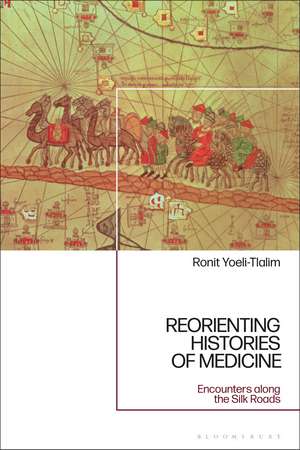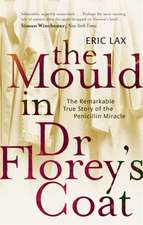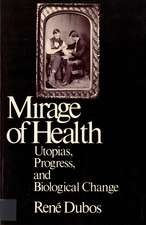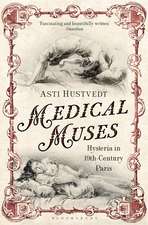ReOrienting Histories of Medicine: Encounters along the Silk Roads
Autor Dr Ronit Yoeli-Tlalimen Limba Engleză Hardback – 27 ian 2021
| Toate formatele și edițiile | Preț | Express |
|---|---|---|
| Paperback (1) | 198.12 lei 43-57 zile | |
| Bloomsbury Publishing – 27 iul 2022 | 198.12 lei 43-57 zile | |
| Hardback (1) | 569.37 lei 43-57 zile | |
| Bloomsbury Publishing – 27 ian 2021 | 569.37 lei 43-57 zile |
Preț: 569.37 lei
Preț vechi: 816.28 lei
-30% Nou
Puncte Express: 854
Preț estimativ în valută:
108.95€ • 114.06$ • 90.15£
108.95€ • 114.06$ • 90.15£
Carte tipărită la comandă
Livrare economică 07-21 aprilie
Preluare comenzi: 021 569.72.76
Specificații
ISBN-13: 9781472512574
ISBN-10: 147251257X
Pagini: 256
Ilustrații: 21 colour illus
Dimensiuni: 156 x 234 x 23 mm
Greutate: 0.53 kg
Editura: Bloomsbury Publishing
Colecția Bloomsbury Academic
Locul publicării:London, United Kingdom
ISBN-10: 147251257X
Pagini: 256
Ilustrații: 21 colour illus
Dimensiuni: 156 x 234 x 23 mm
Greutate: 0.53 kg
Editura: Bloomsbury Publishing
Colecția Bloomsbury Academic
Locul publicării:London, United Kingdom
Caracteristici
Demonstrates and investigates the long history of interconnections between 'European medicine' and 'Asian medicine'
Notă biografică
Ronit Yoeli-Tlalim is Reader in History at Goldsmiths, University of London, UK. She is the co-editor of Rashid al-Din: Agent and mediator of cultural exchanges in Ilkhanid Iran (2013), Islam and Tibet: Interactions along the Musk Routes (2010) and Astro-Medicine: Astrology and Medicine, East and West (2008).
Cuprins
List of IllustrationsPrefaceAcknowledgementsTransliterations and AbbreviationsIntroduction: Medical Encounters along the Silk Roads1. Narrating Eurasian Origins of Medical Knowledge2. Of Dice and Medicine: Interactions in Central Asian 'Contact Zones'3. Myrobalans: The Making of a Eurasian Panacea4. Tibetan Moxa-Cautery from Dunhuang: Practices and Images on the Move5. Medicine of the Bakhshis: Cross-Pollinations in Buddhist IranAfterwordBibliographyIndex
Recenzii
Ronit Yoeli-Tlalim is, in my opinion, one of the most interesting and significant historians of Asian medicine active today. ... while ReOrienting is both informative and theoretically sophisticated, it is also quite readable.
Ronit Yoeli-Tlalim draws on materials from the Bower Manuscript, the Genizah repository in Cairo, and cave 17 in Dunhuang to explain how medical knowledge moved across cultural contact zones and spread through Eurasia. Through reading sources in an unusual combination of languages, this study constitutes an impressive breakthrough in Silk Road studies.
Compact and readable, and yet richly informative about the interactions between a wonderful diversity of linguistic and scholarly traditions, ReOrienting Histories of Medicine will now be the first book that I recommend to students for orientation about the early history of Eurasian medical exchange.
Yoeli-Tlalim synthesizes an impressive range of complex source material and disciplines from history of science and medicine to Tibetan studies and Jewish studies. She makes a valuable niche contribution while simultaneously making big, broad interventions on the Eurasian question ... Her book represents a fantastic archive through which other historians and an English-language readership can build fruitful frameworks that inject ever greater nuance and scale into histories of the Silk Road.
Ronit Yoeli-Tlalim draws on materials from the Bower Manuscript, the Genizah repository in Cairo, and cave 17 in Dunhuang to explain how medical knowledge moved across cultural contact zones and spread through Eurasia. Through reading sources in an unusual combination of languages, this study constitutes an impressive breakthrough in Silk Road studies.
Compact and readable, and yet richly informative about the interactions between a wonderful diversity of linguistic and scholarly traditions, ReOrienting Histories of Medicine will now be the first book that I recommend to students for orientation about the early history of Eurasian medical exchange.
Yoeli-Tlalim synthesizes an impressive range of complex source material and disciplines from history of science and medicine to Tibetan studies and Jewish studies. She makes a valuable niche contribution while simultaneously making big, broad interventions on the Eurasian question ... Her book represents a fantastic archive through which other historians and an English-language readership can build fruitful frameworks that inject ever greater nuance and scale into histories of the Silk Road.













